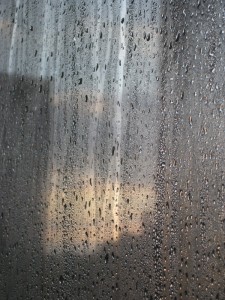You probably know how it feels to wake up with a crick in your neck. That happened to me a few mornings ago, a ghost of which remains when I turn my head to the left. I wonder how it’s possible to be in a position that does me harm and yet sleep through it. I could have avoided pain if my body had recognized the strain and awakened me with a complaint. But apparently I was too tired to notice, and remained in a contorted position until the damage was done.
This makes me keenly aware that discomfort helps keep us from harm. Restlessness is a message that we’ve held the same posture for too long. When visited by dissatisfaction and an urge to try something new, we’re goaded into making the changes we need.
These stirrings, even if unwelcome, are the energy of the soul pushing us forward. They are the whispers of God beckoning us toward the life we’re called to live, or at least to a healthier place. But exhaustion can block the message, and fear can convince us to ignore it. They tell us it’s not the right time to make a change, and sometimes they have legitimate reasons.
But we have to sort through the reflexive warnings and determine how we can stretch. And when they’ve outlived their usefulness and we’re fed up with being depleted or afraid, restlessness can overpower even those elemental emotions. The need to grow is as legitimate as the need for shelter and rest.
Though I wasn’t conscious of it, I got myself into the predicament of developing this crick. I have a new appreciation of how the neck operates, how often it’s called into use, how easily and naturally it turns and bends. And now I’m trying to guard its health. I turn my head gently and stretch the neck carefully, even though it hurts. I need to use those muscles, but carefully. Every time I stretch it gets a little easier. I expect that in a few days I’ll be able to enjoy the freedom of movement I took for granted just a few days ago.
Is there something your body is telling you?










